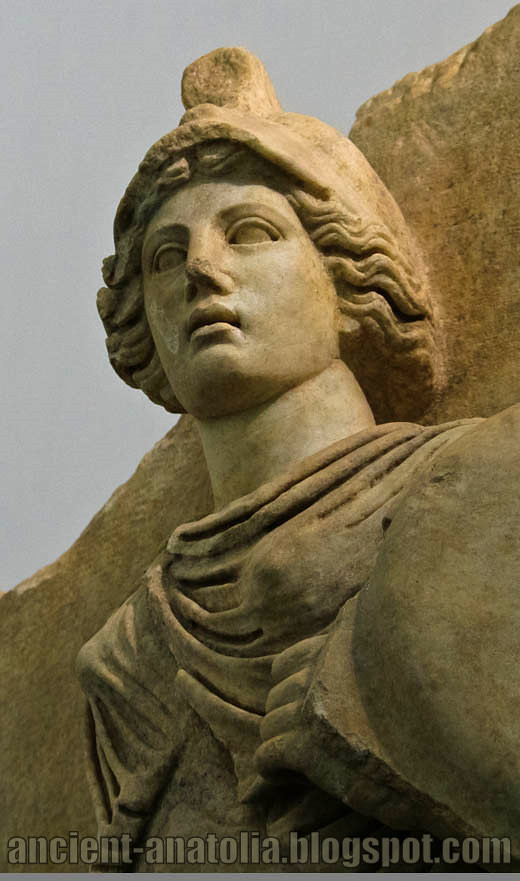
Relief at Sebasteion: Ancient Aphrodisias School of Sculpture...
The figure personifies a Balkan warrior tribe, defeated by Tiberius in AD 6-8, before he became emperor. She wears classical dress, cloak, and helmet, and carries a small shield and probably once a spear. A builder's inscription, Pirouston, written above and to right of shield, ensured the relief was put on the correct base, inscribed ETHNOUS PIROUSTON. - Museum of Aphrodisias, Turkey.
Pirustae or Peiroustai or Pyrissaioi or Piroustai (Greek: Πειροῦσται or Πυρισσαῖοι) were an Pannonian Illyrian tribe Pirust that lived in modern Montenegro. According to the majority of archaeologists, including famous British archaeologist Sir Arthur Evans, the Pirustae had lived in northern Montenegro, around present-day Pljevlja and they were prominent miners. Their prominence in mining has been seen in epigraphic monuments from Dacia's mining regions. Pirustae along with other Pannonians and Illyrians like the Sardeates were later settled in Dacia (modern-day Romania).
(Piroboridava [Ancient Greek: Πιροβορίδαυα] was a Dacian town mentioned by Ptolemy, and archaeologically identified at Poiana, Galati, Romania.)
(Pirro may also refer to an Albanian given name; derived from Greek "Pyrrhos", Latinized as "Pyrrhus", flame-coloured, red-haired).